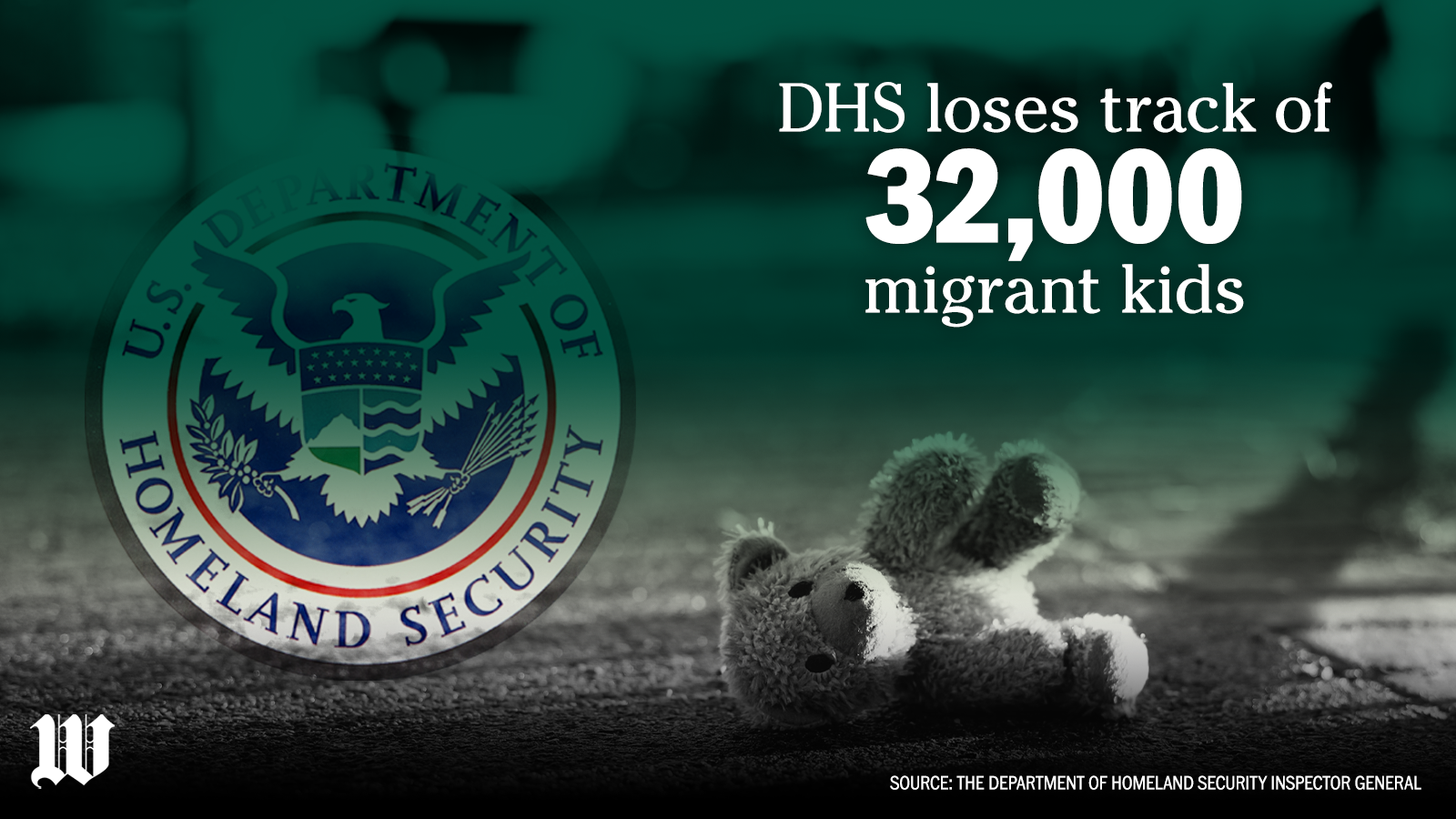The Department of Homeland Security has lost track of 32,000 illegal immigrant children who failed to show up for their deportation hearings and rarely bothers to look for them, the department’s inspector general said Tuesday.
Nearly 300,000 other children still haven’t been given immigration court summonses, the inspector general said. That works out to two-thirds of the children U.S. Immigration and Customs Enforcement has failed to serve.
They are what the government calls unaccompanied children, who show up at the border without parents and who are placed with sponsors in the U.S. while they wait to find out whether they can stay. The government often lets them fall through the cracks.
The Department of Health and Human Services is responsible for placing the children with sponsors, but it has lost track of tens of thousands of them after the children and sponsors stopped replying. The report says ICE, the Homeland Security agency charged with putting the children through their deportation hearings, doesn’t follow up either.

“ICE must take immediate action to ensure the safety of UCs residing in the United States,” Inspector General Joseph Cuffari said in an alert. “Based on our audit work and according to ICE officials, UCs who do not appear for court are considered at higher risk for trafficking, exploitation or forced labor.”
He said the number of children who didn’t appear for their scheduled court dates, 32,000, “may have been much larger” had ICE issued the immigration summons, or notice to appear, to the 291,000 other children unserved as of May.
“By not issuing NTAs to all UCs, ICE limits its chances of having contact with UCs when they are released from HHS’s custody, which reduces opportunities to verify their safety,” Mr. Cuffari said.
He said ICE gave several explanations for its bungles. For one thing, its legal division, which prosecutes cases in immigration court, doesn’t automatically notify Enforcement and Removal Operations, the deportation division, after a child fails to show up.
The legal division admitted to investigators that its data was “unreliable.”
ICE also doesn’t alert HHS when the children don’t show up and lacks a formal policy for following up on those cases.
HHS even created an email inbox for ICE to send alerts when a child failed to attend a deportation hearing. When the inspector general asked ICE about it, an official couldn’t say how often, or even whether, deportation officers used it.
In its official response to the report, ICE said it was sending a note to alert its personnel to start using the mailbox.
Jennifer Cleary, ICE’s chief financial officer, said issuing the court summonses is a tricky matter of timing. It has to wait until the children are placed with sponsors to avoid follow-up paperwork changing the court locations.
She said the agency wants to give the children time to apply for asylum or a special juvenile visa before going to immigration court. Another Homeland Security agency handles those, and it can issue the summonses on its own.
Ms. Cleary did agree to evaluate the idea of creating an automatic notification within ICE so the legal division notifies the deportation division about a no-show.
The children are considered the toughest immigration cases.
Many have been through unfathomable trauma and were sent north to reunite with parents living illegally in the U.S. Others are gang members sent north to help with criminal operations in America.
Their numbers began ticking up under President Obama and have exploded under President Biden.
Roughly 68,000 were caught and released in fiscal 2019, and just 15,128 were caught and released in 2020, the last full year under President Trump. Nearly 366,000 were caught and went to HHS during Mr. Biden’s first three years.
Unaccompanied children have been implicated in some horrific crimes, including the killing of a 20-year-old woman in Maryland. The man accused of that killing entered as a juvenile and was released to a sponsor despite having ties to MS-13 in El Salvador, according to congressional investigators.
For ICE, the children are part of a bigger problem of keeping track of illegal immigrants. ICE’s docket has more than 7 million migrants at large and are not being tracked by a monitoring device.
Unaccompanied juveniles who do go through their immigration cases often end up with favorable results.
Of those who arrived in 2018, nearly a quarter won some form of status within three years. Just 5% were ousted.
An additional 14% were supposed to have left but defied those orders.
The rest, about 57%, still had no outcomes to their cases three years later.
• Stephen Dinan can be reached at sdinan@washingtontimes.com.




Please read our comment policy before commenting.